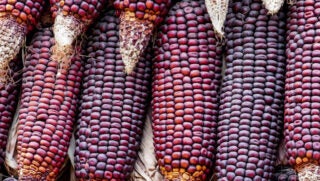Research by University of Missouri Extension agronomists shows that there is little yield difference in unevenly emerged corn. MU Extension agronomist Bill Wiebold’s research dispels concerns that yields decrease when smaller, later-emerging plants compete for nutrients and sunlight with larger, earlier-emerging plants.
Wiebold researched corn emergence’s effect on yield in 2010 and 2011. Wiebold tagged individual plants from emergence through harvest. He compared the weight and height of early-emerging, mid-emerging and late-emerging plants. He then hand-harvested and shelled corn ears, weighed kernels and calculated yield. He found little yield difference if plants emerged within a week of each other.
Uneven soil moisture and uneven temperature in the seed zone are the primary reasons for uneven emergence. Other reasons include soil crusting, shallow seed depth, poor soil contact, cool weather and too few growing degree days to develop strong root systems.
Emergence times may vary between parts of a field, from one row to the next, or even from one plant to the next. Uneven corn is certainly undesirable, but most uneven stands do not warrant replanting, says MU Extension specialist Greg Luce.
Luce cites research from Wisconsin and Illinois extension agronomists showing a 6-9% yield loss in unevenly emerged plots having a week and a half delay. When they compared the yield loss due to later replant, their data showed less than a 5% yield recoup gained from replanting. Luce adds that the final population is most critical.
To help farmers estimate dollar gain or loss from replanting, Wiebold and MU Extension agronomist Ray Massey created the MU Replant Decision Aid. The spreadsheet can be downloaded along with the MU Extension guide “Corn and Soybean Replant Decisions.”
Luce says the right planting depth improves chances for a good stand with even emergence and better yield potential. New research from USDA Agricultural Research Service soil scientist Newell Kitchen and MU master’s student Stirling Stewart shows planting depth corresponds to the window for emergence.
“Too shallow planting leads to far more problems than planting too deep,” Luce says. “From my experiences, bad things happen when corn seed is planted shallower than 1.5 inches. The ideal target is 1.75 to 2.25 inch, but depending on soil type and conditions, seeds may be planted up to 3 inches without any effect on stand establishment.”


